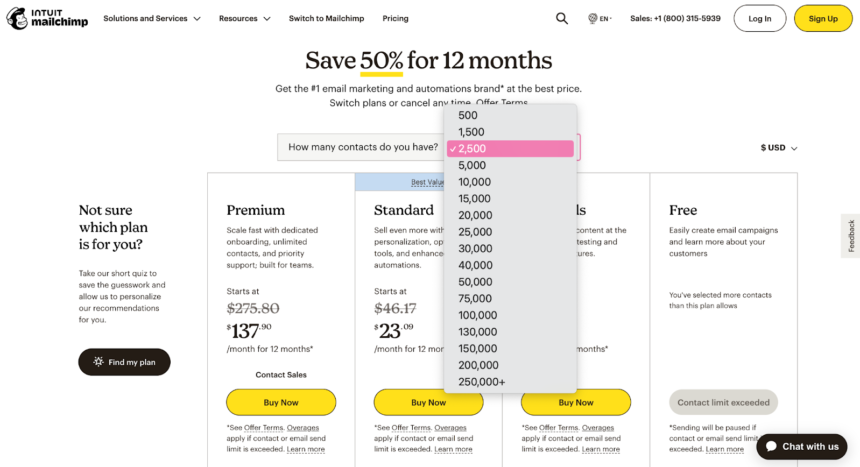Are you looking for a way to boost your sales while keeping customers happy? Enter volume pricing plans. These strategies not only attract bulk buyers but also create lasting relationships with your clients. Imagine being able to offer discounts that encourage larger purchases without sacrificing profit margins. Sounds appealing, right?
Volume pricing is gaining traction in various industries as businesses aim to stand out in competitive markets. Whether you’re a small business owner or part of a large corporation, understanding the ins and outs of volume pricing can be a game changer for your sales approach.
Let’s explore how implementing an effective volume pricing strategy can transform your business and lead you straight toward increased revenue.
What is Volume Pricing?
Volume pricing is a pricing strategy that offers customers discounts based on the quantity of products they purchase. The more you buy, the less you pay per unit. This method encourages bulk buying and helps businesses move larger quantities of inventory.
It’s commonly used in wholesale markets but can be beneficial for retail as well. Businesses create tiered pricing structures to incentivize customers to increase their order size.
For example, a company might offer a 10% discount on orders of ten items or more and raise the discount percentage for even larger volumes.
This approach not only attracts price-sensitive buyers but also fosters customer loyalty, making them feel rewarded for their purchases. By implementing volume pricing, companies can enhance sales while providing added value to their clients.
Benefits of Implementing a Volume Pricing Strategy
Implementing a volume pricing strategy can significantly boost your sales. By offering discounts based on the quantity purchased, you encourage larger orders. This not only increases immediate revenue but also fosters customer loyalty.
Customers appreciate the savings associated with bulk purchases. It creates an attractive proposition for businesses looking to minimize costs while maximizing value.
Another advantage is inventory management. With increased demand from volume buyers, you can move stock faster and reduce holding costs. This approach leads to improved cash flow and operational efficiency.
Additionally, it allows businesses to differentiate themselves in competitive markets. A well-structured volume pricing plan positions your brand as cost-effective and customer-centric, making it easier for potential clients to choose you over competitors.
This type of strategy encourages repeat business by creating long-term relationships with customers who see tangible benefits from their purchases.
Types of Volume Pricing Plans
Volume pricing plans come in various forms, each tailored to meet specific business needs.
Tiered pricing is one of the most common types. It offers discounts based on quantity thresholds. For instance, buying 100 units might yield a lower price per unit than purchasing just ten.
Another approach is the flat-rate pricing model. Here, businesses offer a fixed discount for bulk purchases regardless of quantity levels. This method simplifies decision-making for customers.
Dynamic volume pricing adjusts rates based on demand and supply fluctuations. Companies use algorithms to set prices that maximize sales while remaining attractive.
Loyalty-based volume pricing rewards repeat customers with exclusive discounts as they consistently buy larger quantities over time.
These diverse options allow businesses to choose what best aligns with their goals while appealing to different customer segments effectively.
How to Determine the Right Plan for Your Business
Determining the right volume pricing plan for your business involves several key considerations. Start by analyzing your customer base. Understand their purchasing habits and preferences. Are they likely to buy in bulk?
Next, evaluate your product margins. Know how much discount you can afford without hurting profitability. This insight helps shape competitive yet viable pricing tiers.
Also, consider industry benchmarks. Research what competitors are offering to stay relevant in the market while differentiating yourself with unique value propositions.
Engage with your sales team as well; they often have firsthand insights into customer demands and objections regarding price points.
Test different plans on a small scale before fully rolling them out. Collect feedback and make necessary adjustments based on performance metrics to ensure sustained success.
Strategies for Effective Implementation
Implementing a volume pricing plan requires careful attention to detail. Start by analyzing your customer base. Understand their purchasing habits and preferences.
Next, set clear objectives for your pricing strategy. What are you aiming to achieve? Increased sales, improved customer loyalty, or market penetration? Defining these goals will guide your approach.
Training your sales team is crucial. They should fully understand the benefits of volume pricing so they can communicate effectively with clients. Provide them with resources that highlight the advantages.
Use technology to streamline the process. Pricing software can help automate adjustments based on purchase volumes, making it easier to manage changes in real time.
Gather feedback regularly from customers and staff alike. This will help you refine and adjust your strategy as needed while ensuring it meets everyone’s expectations and needs efficiently.
Case Studies: Successful Companies using Volume Pricing
Several companies have successfully leveraged volume pricing to boost their sales. For instance, a well-known office supply retailer adopted tiered pricing for bulk orders. This approach not only increased their average order value but also improved customer loyalty.
Another example is a popular software provider that introduced discounts for annual subscriptions purchased in larger quantities. By doing this, they attracted more businesses looking to save on long-term expenses while ensuring steady revenue streams.
A leading food distributor implemented volume-based incentives for restaurants and catering services. As a result, they saw significant growth in repeat business and expanded market reach.
These case studies highlight the versatility of volume pricing across different industries. Each company tailored its strategy to meet specific customer needs while reaping enhanced profitability.
Potential Challenges and Solutions
Implementing a volume pricing plan can come with its share of hurdles. One common challenge is misalignment between sales teams and marketing strategies. When these departments don’t communicate effectively, customer expectations may not match the offered discounts.
Another issue could be inventory management. If demand spikes unexpectedly due to lower prices, companies might struggle to fulfill orders promptly. This can lead to dissatisfied customers and potential loss of future business.
To tackle these challenges, regular training sessions for staff can foster better communication and alignment on goals. Implementing robust inventory tracking systems also helps manage stock levels more efficiently.
Additionally, gathering customer feedback after launching volume pricing can provide insights into how well the strategy resonates with buyers. It’s essential to remain adaptable, making tweaks as needed based on real-time data and market trends.
Conclusion
Volume pricing plans offer a powerful strategy for businesses looking to boost sales and attract more customers. By understanding the intricacies of volume pricing, companies can tailor their offers to meet customer demands effectively.
Implementing a well-structured volume pricing plan not only enhances your sales approach but also fosters stronger relationships with clients. The benefits are clear: increased order sizes, improved cash flow, and heightened customer loyalty.
Choosing the right type of volume pricing plan involves analyzing your market, competition, and customer behavior. Adapting your strategy based on feedback is crucial for long-term success.
As seen in various case studies, successful implementation leads to remarkable growth opportunities. However, it’s important to stay aware of potential challenges that may arise during execution. Proactive problem-solving will mitigate risks associated with this pricing model.
Adopting a thoughtful approach to volume pricing can set you apart in today’s competitive landscape. Embrace these strategies and watch as they transform your business dynamics for the better.


